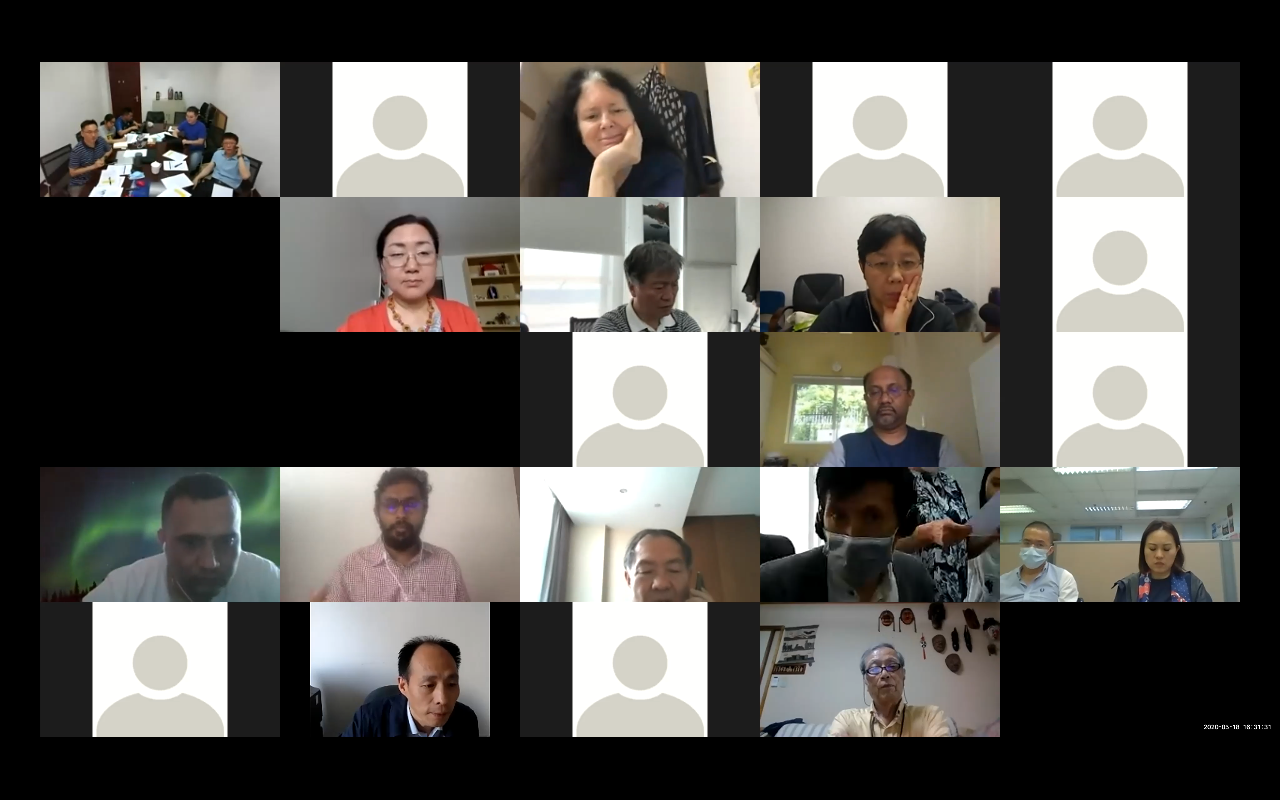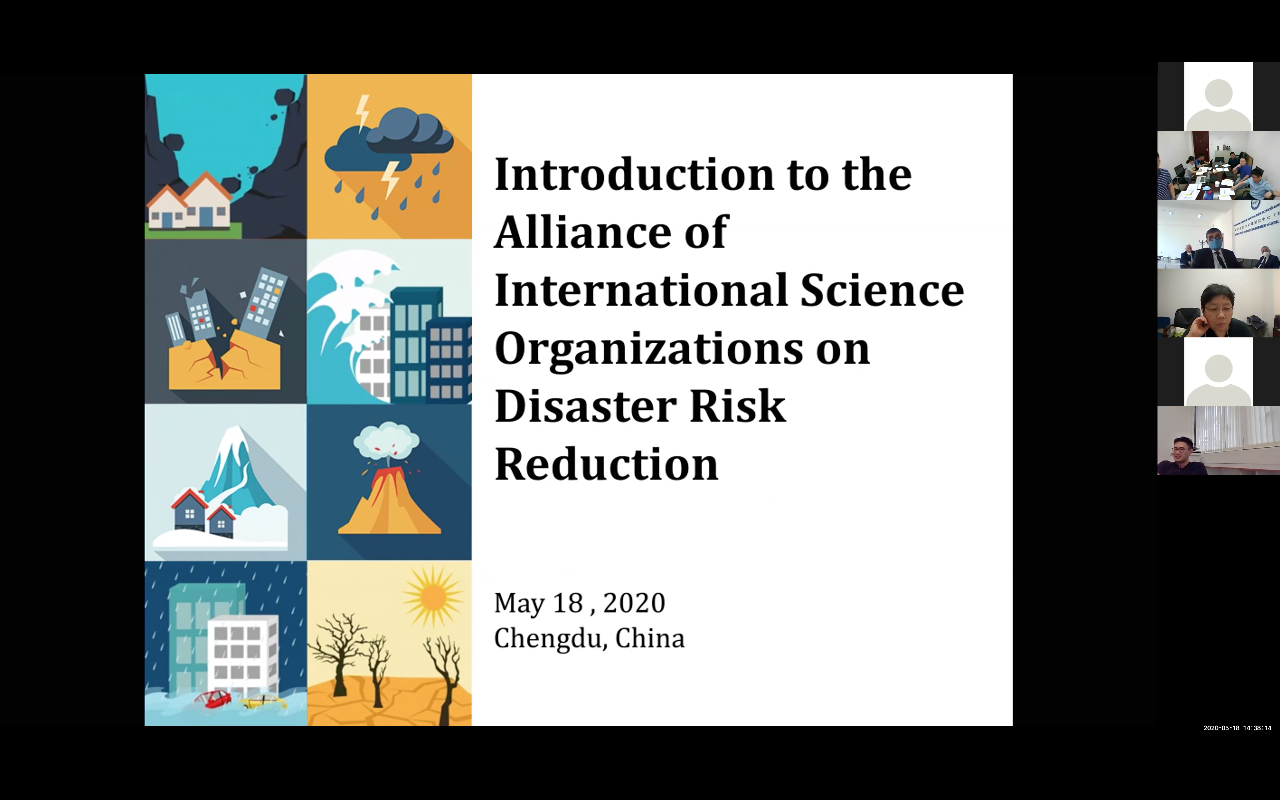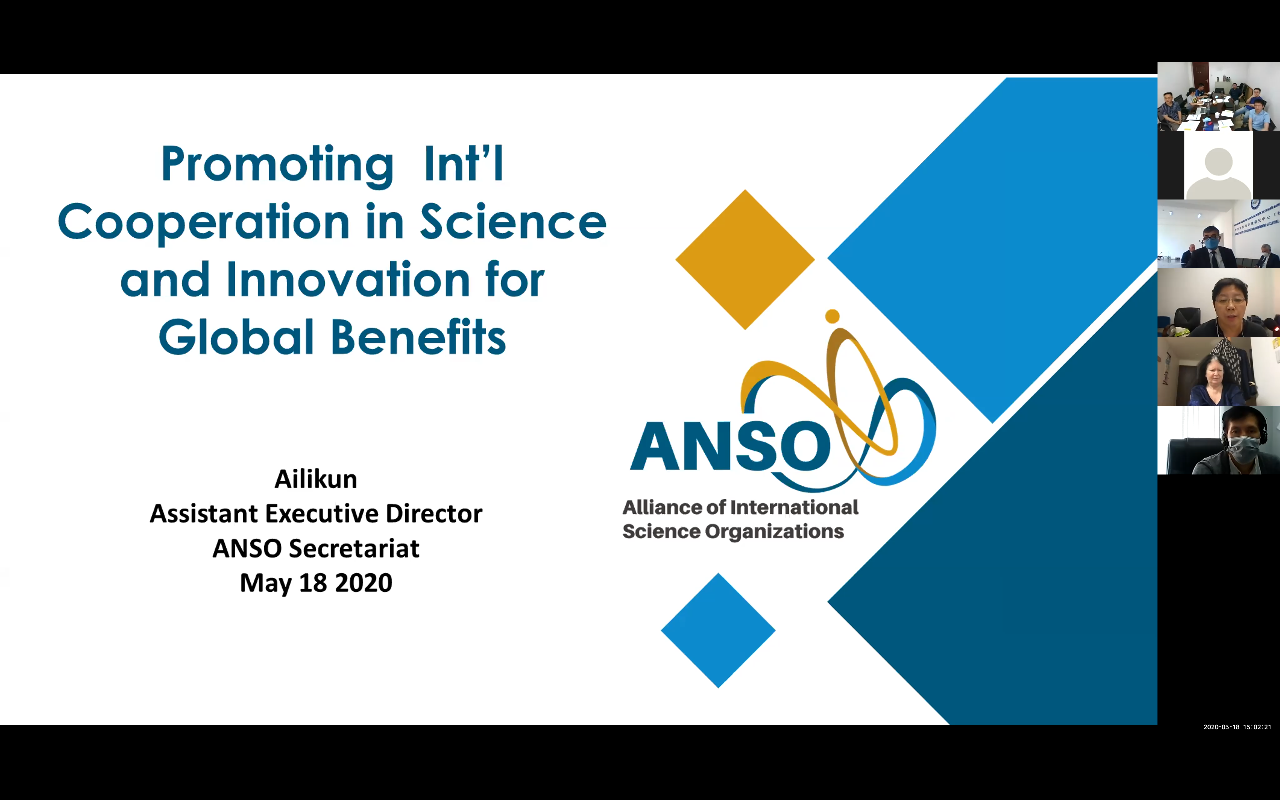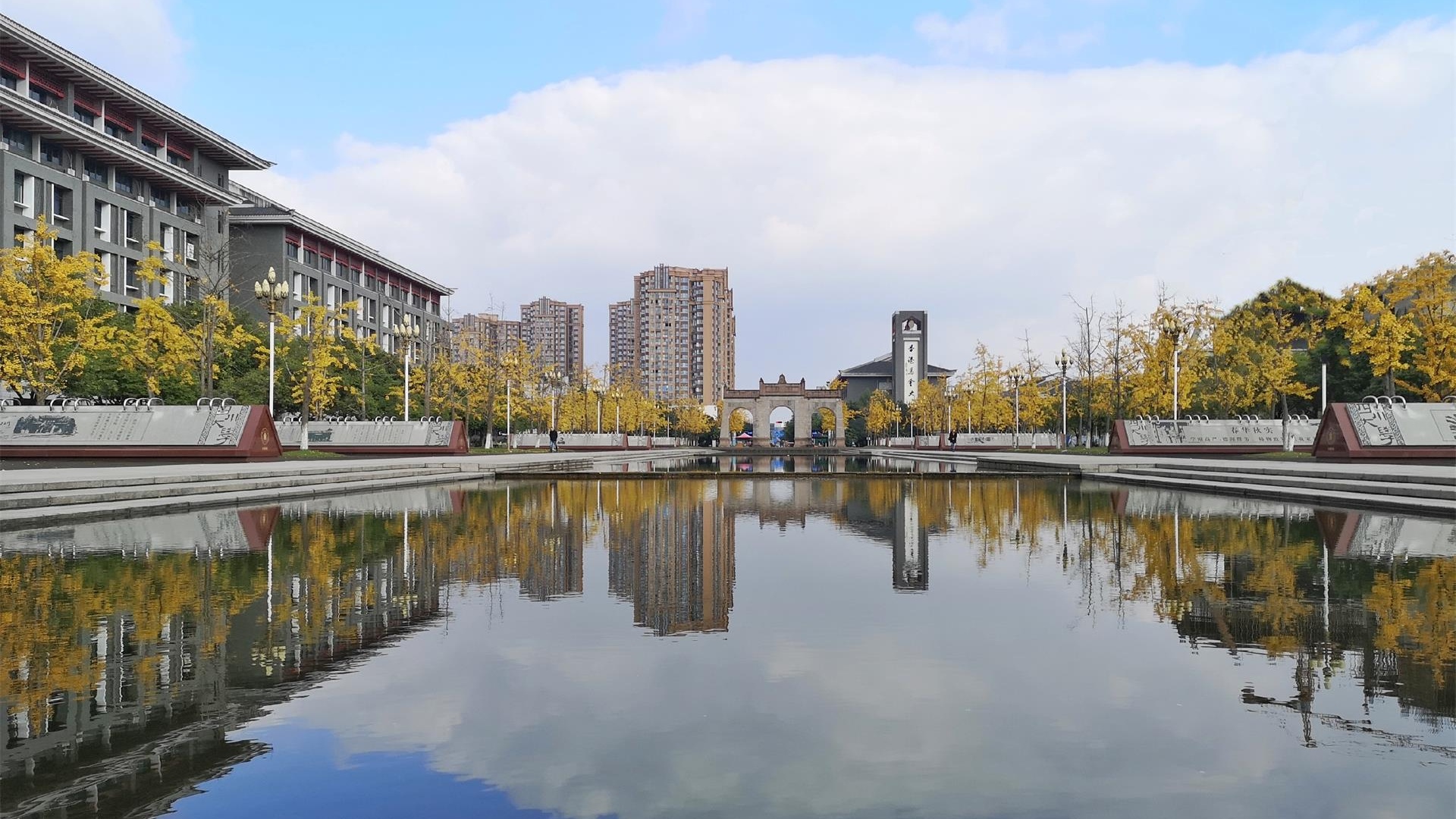On May 18, 2020, the 2nd Discussion Meeting of the Alliance of International Science Organizations on Disaster Risk Reduction (ANSO-DRR) was held virtually in collaboration with the Institute for Disaster Management and Reconstruction (IDMR), Sichuan University. The goals of the meeting were to provide updates and development of the ANSO-DRR since the 1st Discussion Meeting in Beijing (May 11, 2019) and to discuss further promotion of ANSO-DRR under the current COVID-19 pandemic.
Prof. Gretchen Kalonji, Dean of IDMR and one of the Co-Chairs of ANSO-DRR, welcomed participants from ANSO-DRR members along the Belt and Road region and moderated the whole meeting. Prof. Gordon Zhou from the Institute of Mountain Hazards and Environment (IMHE) gave the first presentation sharing updates of ANSO-DRR since the 1st Discussion Meeting. He then introduced the work plan of ANSO-DRR in the following three years, including several publications on disaster risk, a mountain hazards monitoring platform, and a mountain hazards simulation and prediction platform.

Prof. Likun Ai, the Assistant Executive Director of ANSO, gave a thorough introduction to ANSO, with which ANSO-DRR is affiliated. ANSO is a transdisciplinary international science organization under the leadership of the Chinese Academy of Sciences, with 53 members in over 40 countries. Prof. Ai discussed ANSO’s recent programs and activities as well as the challenges it faces, including the establishment of a joint funding mechanism among ANSO members and partners; innovative ideas on transboundary cooperation to bring in more active institutions and scientists; and cooperation with key international organizations at the actual program level.


In line with the big picture of ANSO by Prof. Ai, Prof. Gretchen Kalonji shared some perspectives on the strategic development of ANSO-DRR. ANSO-DRR has high-level participation of national academies of sciences and involvement of the top research institutions. However, it is still a challenge for ANSO-DRR to develop a strategy in order to add value to existing networks (e.g. GADRI, ANSO, IAP, etc.). In addition, ANSO-DRR needs to create better linkages between DRR communities and health emergency management communities; focus on the involvement of youth and youth networks; promote greater collaboration with engineering communities and professional societies in DRR, and contribute to policy development. For all of the above, ANSO-DRR needs a powerful knowledge platform for sharing information.
The meeting was closed by Prof. Peng Cui, Director of IMHE and the other Co-Chair of ANSO-DRR. He reiterated the compilations, reports, mountain hazards monitoring, and early warning platforms that ANSO-DRR targets to deliver in three years. These shall be of great use to local scientists and other DRR practitioners within the Belt and Road regions. Prof. Cui also envisions ANSO-DRR to become an international think tank which would serve as a multilateral cooperation mechanism for DRR.
This meeting announced the appointment of Prof. Lijun Su, Vice Director of IMHE, as ANSO-DRR Secretary-General. It further introduced the first steering committee of 12 top experts from the Belt and Road countries. The first steering committee meeting is expected to take place virtually in early June.














